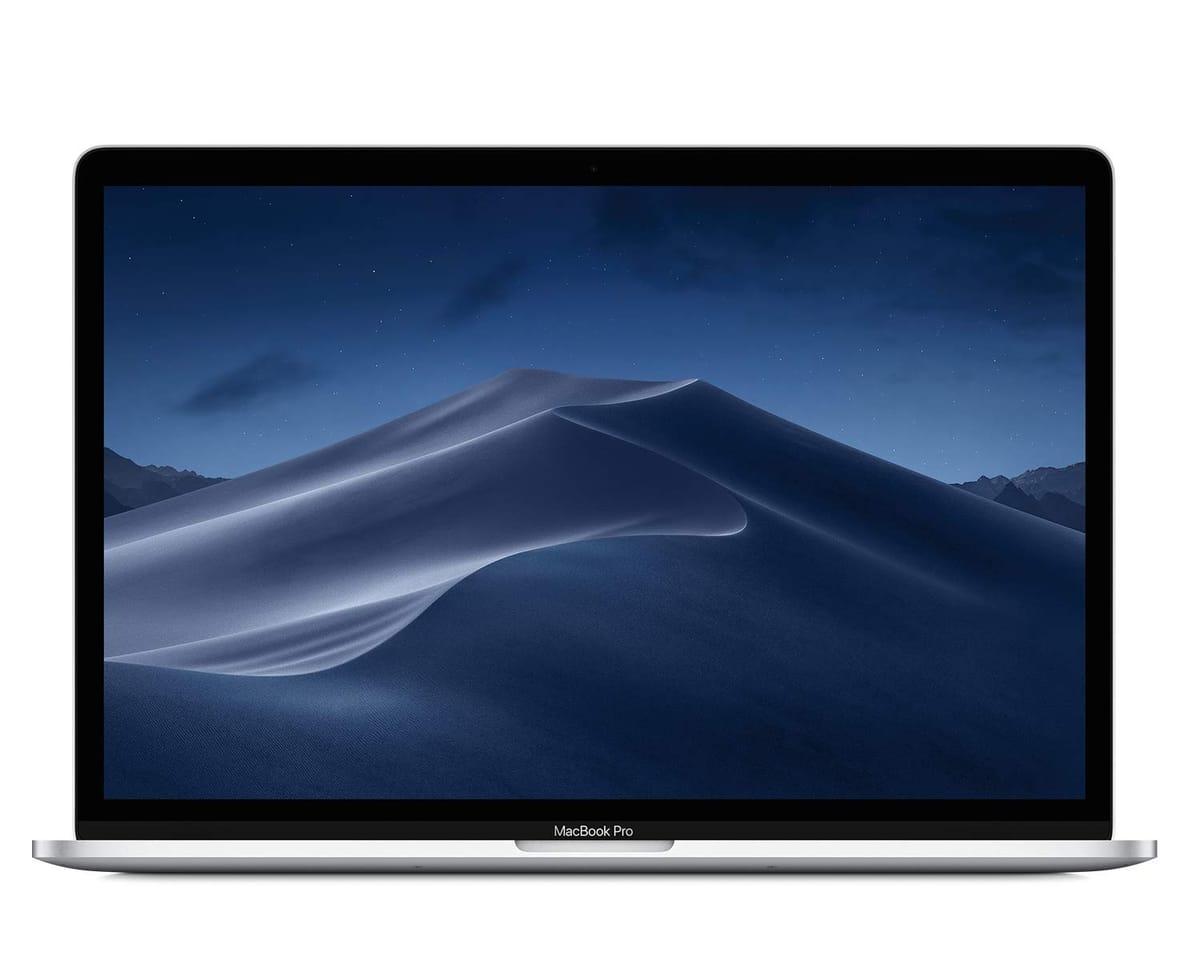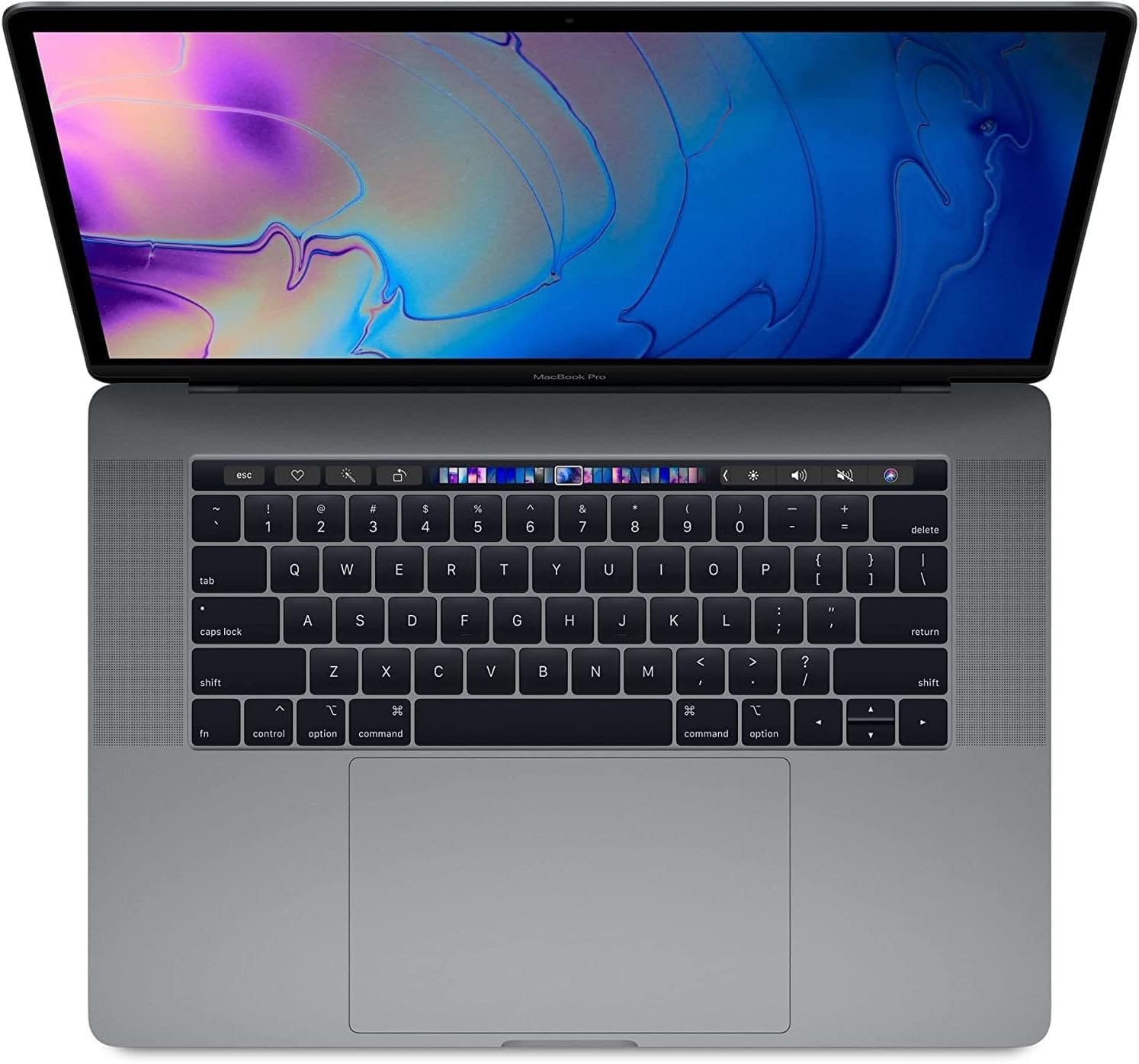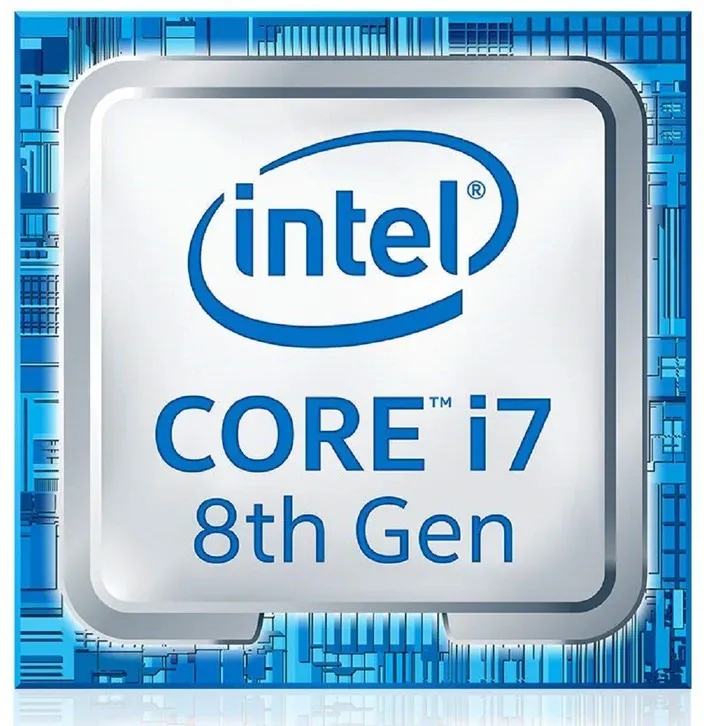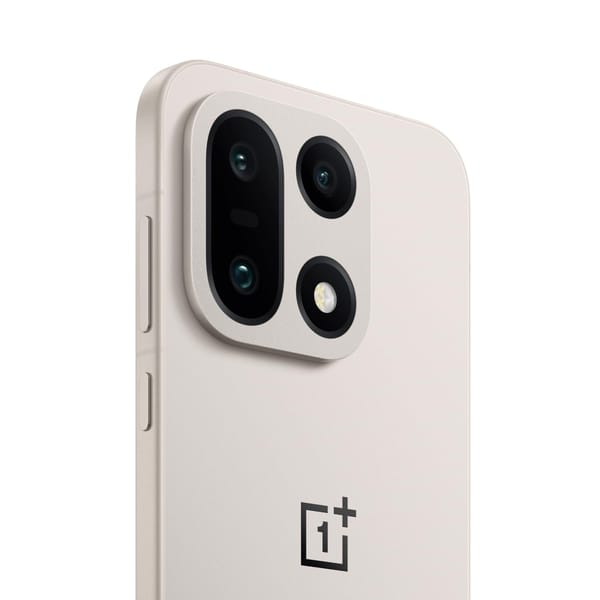MacBook Pro 15″ (2019) Review: Power and Pro Features for Creators
MacBook Pro 15" 2019, Core i7 8th Gen, 16GB RAM, 512GB SSD, Radeon Pro 555X/560X. Large screen, powerful graphics.

Introduction
The MacBook Pro 15″ (2019, model A1990) remains one of Apple’s most notable Intel-era professional laptops. With a six-core Intel Core i7 processor, discrete graphics, a large Retina display, and premium build, this MacBook Pro was made for creative professionals, developers, and power users who needed more than a lightweight ultrabook.
Though Apple has since shifted its focus to Apple Silicon chips like M1, M2, M4, this 2019 Pro still delivers significant capability. In 2025, it offers value to users who require Intel compatibility, high-performance discrete graphics, and a large workspace via its 15.6-inch Retina screen. In this review, we’ll explore its specifications, design, display, performance, connectivity, battery life, thermals, and how it compares not just with its contemporaries but with newer models like the MacBook Pro M1 and MacBook Pro / Air M4. We’ll also discuss why buying refurbished from trusted sellers like Refurbo can be especially smart.
Specifications Overview
| Feature | MacBook Pro 15″ (2019, A1990) |
|---|---|
| Processor | Intel Core i7, 8th Gen, 6 cores |
| RAM | 16 GB DDR4 |
| Storage | 512 GB SSD |
| Graphics | AMD Radeon Pro 555X or 560X (4 GB GDDR5) |
| Display | 15.6″ Retina, 2880×1800, 60 Hz |
| Touchscreen | No |
| Dimensions | ~34.9 × 24.2 × 1.5 cm |
| Weight | ~1.83 kg |
| Ports | 4× Thunderbolt 3 (USB-C), Audio Jack |
| Special Features | Large screen, discrete GPU, performance for creative workloads |
Design and Build Quality
The 2019 MacBook Pro 15″ continues Apple’s design tradition: a sleek aluminum unibody build, silver and space gray finishes, minimal aesthetics, premium fit and finish. Despite its size, it still feels sturdy and refined. The large case provides a generous palm rest, full-size keyboard, and room for a spacious trackpad and speaker grilles.

At ~1.83 kg and about 1.5 cm thick, it’s not a travel ultrabook, but for a 15-inch laptop with discrete graphics, it is manageable. Apple’s hinge design and display lid feel firm, reducing flex. The keyboard in 2019 benefits from improvements over earlier butterfly mechanisms, making typing more reliable. The overall aesthetic remains professional and suitable for creative and business settings.
Display
One of the standout features of this model is its Retina display: 15.6″ with a resolution of 2880×1800 pixels. The panel supports P3 wide color gamut and True Tone, meaning colors look vibrant and natural, especially for photo and video work. Brightness is strong, about 500 nits, which helps for indoor use and helps somewhat in moderate daylight conditions.
With that resolution and screen size, workspace is generous. Side-by-side windows, large editing timelines, or detailed design work all benefit. The sharpness and clarity remain impressive, even compared to newer models—though Apple’s more recent displays (especially in the M-series) have raised the bar with HDR/XDR, higher watt display capabilities, and sometimes higher refresh rates.
Performance
With its 6-core Intel Core i7 (8th Gen), discrete AMD Radeon Pro 555X or 560X GPU, 16 GB of RAM, and 512 GB SSD, this MacBook Pro was built for performance. It excels in creative tasks—video editing, photo editing, rendering, 3D design—far beyond what integrated graphics machines can accomplish. The discrete GPU makes substantial difference in performance for workloads that support GPU acceleration.

Day-to-day performance is also strong: apps open swiftly, multitasking is responsive, and even heavier tasks like exporting video or working with large design files are feasible. The SSD speeds remain excellent, helping mitigate delays. The CPU turbo boost and GPU power deliver strong frames and rendering rates depending on workload.
The trade-off for performance is heat and power draw, especially under sustained heavy workloads. The fans do become audible, and when compiling, rendering, or gaming, you’ll feel warmth under the keyboard and toward the back vents. But performance remains usable under load, thanks to Apple’s thermal design and ample cooling for discrete graphics.
Connectivity and Ports
This model offers four Thunderbolt 3 (USB-C) ports plus a headphone jack. That gives excellent flexibility: multiple external displays, high-speed external storage, video output, and power delivery through any of the ports. No USB-A or HDMI or SD card slot is included, meaning adapters are essential for many workflows. Creative professionals, who often have cameras, SD cards, external drives, or HDMI for external monitors/projectors, will need to use adapters or hubs.
Thunderbolt 3's bandwidth and versatility is a strong plus: supports external GPUs, docks, multiple 4K or 5K displays, and high-speed file transfer. The lack of legacy ports is a downside for some, but many users have adjusted.
Battery Life and Thermals
Battery life in lighter usage—web browsing, documents, occasional media playback—is respectable. Expect around 7-8 hours under such conditions. For heavier workloads—editing, rendering, video export—the duration drops significantly. Compared to newer Apple Silicon machines, battery efficiency lags behind.
Heat and fan noise are more pronounced under load. The discrete GPU and powerful CPU generate heat, and fans ramp up noticeably. The underside and keyboard deck can get warm during rendering or gaming. For prolonged heavy work, external cooling or working in cooler environments helps.
Comparison with MacBook Pro M1 & MacBook Pro / Air M4
To understand where this 2019 model stands today, it’s helpful to compare with more modern Apple offerings: the MacBook Pro M1 and the newer MacBook Pro M4 & MacBook Air M4 models.
- MacBook Pro M1 delivers far better power efficiency, quieter operation (fans in many cases are minimal or passive), and excellent battery life. For many users doing productivity, design previewing, lightweight creative tasks, the M1 Pro gives more sustained performance with less heat.
- MacBook Pro / MacBook Air M4 go further: they improve on display tech (higher brightness, HDR/XDR, sometimes better refresh rates), offer faster unified memory architectures, improved GPU performance per watt, and better future-proofing in terms of software support and efficiency.
- However, the 2019 Pro continues to have strengths: for workflows relying on discrete GPU acceleration (some video editing, 3D work, GPU-accelerated filters), Intel compatibility for certain older apps, and very high screen resolution with a large workspace. Also, for those who find refurbished deals, the performance per rupee (or per rupee equivalent) can be compelling.
Comparison Table: MacBook Pro 2019 vs MacBook Pro M1 vs MacBook Pro M4 & Air M4
| Feature | MBP 15″ 2019 (A1990) | MacBook Pro M1 | MacBook Pro M4 | MacBook Air M4 |
|---|---|---|---|---|
| Processor | Intel Core i7, 6 cores | Apple M1 | Apple M4 chip | Apple M4 chip |
| RAM | 16 GB DDR4 | 8-16 GB Unified | 16-24+ GB Unified memory | 16 GB Unified |
| Storage | 512 GB SSD | 256-512 GB SSD | 512 GB → higher | Similar base storage |
| Graphics | AMD Radeon Pro 555X/560X | Integrated M1 GPU | Much better GPU performance | Integrated GPU but efficient |
| Display | 15.6″ Retina 2880×1800 | Smaller screen, Retina | Higher brightness, HDR etc. | Light, efficient display |
| Ports & Connectivity | 4× TB3, Audio Jack | Fewer ports | Modern ports restored (HDMI, SD, MagSafe etc.) | Minimal but sufficient |
| Weight & Size | ~1.83 kg, large chassis | Lighter models | Efficient build, newer materials | Very light, fanless or quiet |
| Battery Life | 7-8 hrs light use | Much better | Often >12-18hrs depending model | Among best in efficiency |
| Efficiency & Thermals | Warm under load, audible fans | Quieter, efficient | Excellent efficiency, cooler under load | Excellent even under load |
| Best Use Case | Discrete GPU, pro apps, large screen | Portability with strong performance | Cutting-edge display & performance | Everyday light & efficient workloads |
Why Buying Refurbished from Refurbo Makes Sense
Opting for a refurbished MacBook Pro 15″ 2019 from Refurbo can be especially appealing:
- You can obtain a machine with discrete graphics, large high-res screen, strong CPU power, and premium build at much lower cost than new M series machines.
- The value per rupee is often high, especially for creative workflows where discrete GPU matters.
- Refurbo refurbished units are typically tested, warranty-backed, ensuring battery health and build quality so that performance is reliable.
- For users who need Intel compatibility (older plugins, Boot Camp, legacy software), this model remains one of the better options refurbished.
- Also sustainability: reusing powerful machines like this reduces e-waste, and buying refurbished supports that.
Conclusion
The MacBook Pro 15″ (2019, A1990) still offers a compelling package in 2025, especially for creative professionals and power users who need a large display, discrete graphics, and strong performance. While Apple Silicon models like the M1 and M4 outperform it in efficiency, battery life, and newer display technologies, the 2019 model holds its own in workloads depending on GPU, large screen real estate, and compatibility with Intel-only apps.
If you find it refurbished in good condition, it can be a strong value play. For users who prioritize battery, thermal efficiency, and future-proofing, newer MacBook Pros with M4 or M series may be better. But for what it delivers, the 2019 15-inch remains a valid choice.
FAQs
Q: Is the MacBook Pro 15″ (2019) suitable for video editing and creative workflows in 2025?
A: Yes. Its discrete GPU, high-res display, and 6-core i7 make it capable of many demands like video editing, photo work, design, especially where GPU acceleration is supported.
Q: How does it compare with the MacBook Pro M1 for creatives?
A: The M1 excels in efficiency, battery life, quiet operation, and modern software optimization. The 2019 Pro may outperform in some GPU-focused tasks, but it lags in power efficiency and heat management.
Q: Does the MacBook Pro 2019 still receive macOS updates?
A: Yes. Apple continues supporting Intel Macs for some time, though future updates will likely emphasize Apple Silicon. But for many users, support remains sufficient.
Q: Will battery life of the 2019 model disappoint compared to M-series?
A: In heavy use yes—it’s less efficient. For lighter tasks, it still gives acceptable hours, but the M1/M4 machines are far better in sustained battery life.
Q: Is the 2019 Pro’s weight and size still acceptable for travel?
A: It’s heavier and bulkier than modern ultrabooks, so not the best for ultra-light travel. For users who need the screen size and GPU, though, many accept the trade-off.
Q: Why choose the 2019 over the latest M4 model?
A: If you need discrete AMD GPU, Intel compatibility, or a large 15-inch screen on a budget via refurbished, the 2019 version offers those. M4 delivers more in modern features, efficiency, display tech, but at higher price.
Q: How is the keyboard and reliability in 2019 compared to Apple Silicon models?
A: The 2019 Pro improved keyboard reliability over prior butterfly models. It isn’t as modern as some M series designs, but in many refurbished units the Magic Keyboard updates and repairs help it remain reliable.



